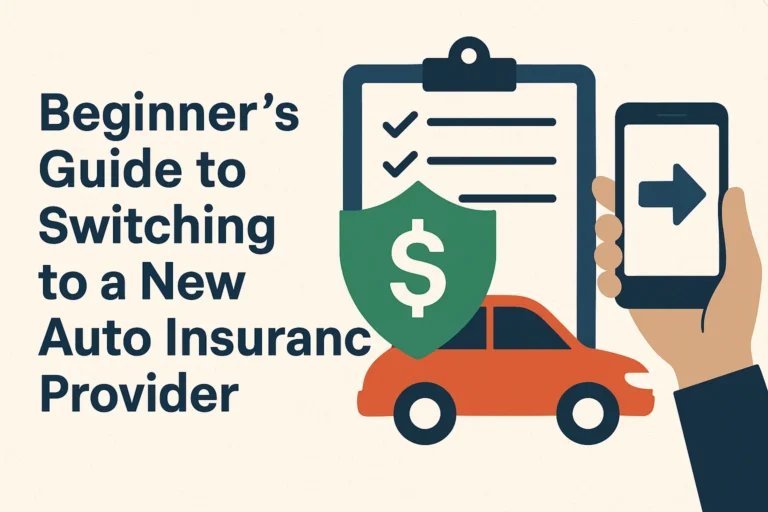Understanding how insurance deductibles work is one of the most crucial steps in choosing the right insurance plan. Whether you’re selecting health, auto, or home insurance, your deductible amount can greatly affect your monthly premiums, out-of-pocket costs, and overall financial planning.
This guide offers a side-by-side comparison of low vs. high deductibles, outlines strategic use cases, and includes real-world scenarios to help you make smarter decisions. By the end, you’ll have a clear roadmap to align your deductible choice with your unique budget and risk tolerance.
Detailed Overview of Insurance Deductible Types
Low Deductible Insurance Plans
Low deductible plans typically have higher monthly premiums but provide greater cost-sharing when a claim is made. These plans are ideal for individuals who anticipate frequent use of their insurance coverage, such as people with chronic medical conditions or drivers with long commutes.
The lower the deductible, the less you’ll have to pay upfront when you use your insurance. For example, a $250 deductible means that you pay the first $250 of an eligible claim, and the insurer covers the rest, subject to policy limits. These plans bring peace of mind at the cost of regular, higher payments.
Low deductible plans are common in health insurance marketplaces, particularly under Gold or Platinum plans. They are also popular in auto insurance among drivers who cannot afford unexpected large repair costs.
However, the tradeoff is that monthly premiums can become a long-term financial burden if you rarely use your insurance benefits.
High Deductible Insurance Plans
High deductible plans come with lower monthly premiums but require more upfront out-of-pocket payments when a claim occurs. These are best suited for individuals who are financially stable, risk-tolerant, and expect minimal insurance claims during the policy period.
For instance, a health insurance plan with a $7,500 deductible might only cost half as much in monthly premiums as a low deductible plan, but you’ll be responsible for all costs up to that $7,500 before your insurer contributes.
These plans are often paired with Health Savings Accounts (HSAs) in the U.S., allowing policyholders to save money tax-free for medical expenses. For auto or home insurance, high deductible policies can reduce premiums significantly—sometimes by 20-40% annually.
Yet, if an emergency arises, the financial shock of paying such a high amount upfront could destabilize a household that hasn’t budgeted accordingly.
Comparison Tables: Pros and Cons of Each Deductible Strategy
| Feature | Low Deductible | High Deductible |
|---|---|---|
| Monthly Premium | High | Low |
| Out-of-Pocket Expense | Low at time of claim | High at time of claim |
| Best For | Frequent claims, ongoing health issues | Healthy individuals, infrequent claims |
| Financial Flexibility Required | Less | More |
| Scenario | Low Deductible Plan | High Deductible Plan |
|---|---|---|
| Monthly Premium | $400 | $200 |
| Deductible | $500 | $5,000 |
| Total Cost with 1 Major Claim | $4,800 (12×400) + $500 = $5,300 | $2,400 (12×200) + $5,000 = $7,400 |
Which Strategy Is Right for You?
Young Adults with Limited Health Needs
If you’re in your 20s or early 30s with no chronic medical conditions, a high deductible plan might be more economical. Your likelihood of significant claims is low, and you’ll benefit from reduced monthly payments while saving in an HSA for emergencies.
Families with Children or Chronic Illnesses
For those who make regular doctor visits or have dependents with health needs, a low deductible insurance plan can reduce financial stress. While premiums are higher, the reduced upfront cost during medical visits balances the long-term budget.
Self-Employed or Gig Workers
Budget-conscious freelancers may lean toward high deductible options but should ensure an emergency fund exists. Alternatively, mid-deductible hybrid plans might offer a middle ground.
Homeowners in Disaster-Prone Areas
When insuring property in regions prone to hurricanes or wildfires, lower deductibles can speed up recovery after major loss events. Consult with your provider or check local disaster risk data at FEMA Flood Maps.
Real-Life Scenarios and User Feedback
Case Study 1: Alex, a 27-year-old software developer, switched to a high deductible health plan. With no major medical issues and $3,000 in his HSA, he saved $1,200 per year in premiums.
Case Study 2: Maria, a mother of two, chose a low deductible health plan. Her daughter required regular asthma treatment. Her predictable, manageable out-of-pocket costs outweighed the higher premiums.
Case Study 3: Jeremy and Tasha, new homeowners, picked a high deductible home insurance policy. After a small kitchen fire caused $4,000 damage, they regretted their choice due to the high deductible not being worth the premium savings.
These examples show that personal circumstances dramatically impact the optimal deductible decision. Always calculate potential claims versus premium savings.
Conclusion and Recommendation
Choosing between low vs. high insurance deductibles requires a nuanced understanding of your financial landscape, risk appetite, and likelihood of making claims. There is no universal answer, but the smarter strategy is one aligned with your lifestyle and budgetary tolerance.
For most people, the best approach is to reassess insurance needs annually, especially during open enrollment periods or after major life events.
Explore more on choosing read our guide on reducing your monthly premium without sacrificing coverage.
For further professional advice, consult with a licensed insurance broker or explore trusted resources like HealthCare.gov Deductible Glossary.






